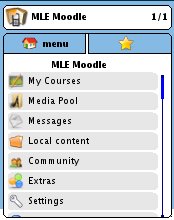I’ve been writing about QR Codes in education for the last five years (http://mlearning.edublogs.org/?s=qr+code), on this blog, as well as in a few published and formal papers. Recently, I have been seeing some buzz around QR Codes in education, and without meaning in any way to discourage people from trying out QR Codes (or other present-day locative technologies like RFID tags), I thought it might be time to update this blog with my latest thoughts on them.
While I was very interested in their potential when they were almost unheard of in the western hemisphere, I now believe they provide an interesting technology for situated mobile learning in the present day, but I increasingly think will be supplanted by visual searching (e.g. Google Goggles) and mobile text recognition (both typeface and handwritten) within about five years.
The former technology, visual searching, allows mobile devices to visually “recognise” shapes of objects, logos, etc. taken with a mobile phone camera, and use that to retrieve information. This would ultimately free tagging from any single barcode standard, and allow physical objects to be tagged with ANY consistent visual symbol. In a few years, this technology will become much more accurate, particularly as imaging resolutions continue to increase and mobile processing becomes faster and more powerful.
Simultaneously, improved text recognition will allow retrieval of, or access to, web-based activities or resources simply by typing or writing our a URL in human-readable form and pointing a mobile phone camera at that URL. This would completely bypass the need to create a QR Code in the first place, as well as having the advantage of knowing where your phone browser is taking you. A QR Code could, for example, lead to a hidden virus or phishing site, but its actual destination is obscured by its graphical, barcoded representation.
I still see QR Codes as being a useful tool for mobile and situated learning in the present day, but I have never been content to simply look at the present without looking towards the future; and in that future, I see QR Codes becoming rapidly redundant.
Just some thoughts from an ed tech who has been thinking about these issues for a long time. 🙂



